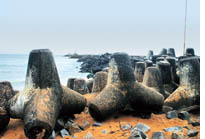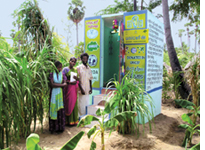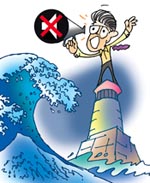2024 Disasters in Numbers
<p>In 2024, the Emergency Events Database (EM-DAT) recorded 393 natural hazard-related disasters. These events caused 16,753 fatalities and affected 167.2 million people. Economic losses totaled US$241.95
<p>In 2024, the Emergency Events Database (EM-DAT) recorded 393 natural hazard-related disasters. These events caused 16,753 fatalities and affected 167.2 million people. Economic losses totaled US$241.95
Wetland management may be improved by evaluating nonlinear relationships of economic value and ecological services.

A tsunami museum, the first of its kind in India, has been opened at Alappad village in Kerala's Kollam district. It aims to educate people about the risks of tsunamis and to commemorate those who

Ever since the 2004 tsunami flattened coastal villages, the Tamil Nadu government has been raising sea walls and protective plantations on a priority basis to blunt the impact of sea waves. It
In the post-tsunami period, in the midst of hectic relief work, the Social Activities for Rural Development Society (SARDS), an NGO working in the Prakasam district of Andhra Pradesh, made a startling discovery. While every government and voluntary agency in the area was bending over backwards to offer relief to the fishing community, the 35,000 odd salt making community in the district was left totally out of the ambit of all relief and aid work. Dec 2007

people living in Sipasarubali near the coast in Puri, Orissa, are under threat. Waves have swept away parts of a beach in this popular tourist spot. While local residents are perturbed and visitors

<B><font class="UCASE">report>></font> <font class="UCASE">Coastal Zone Management Notification

Butterflies in the Andaman archipelago have been facing colonisation. The carrier of the colonists was the 2004 tsunami which brought three foreign species of butterflies to the islands, threatening

After spending a lot of money on sea walls, the Kerala government is now creating an eco-fence against natural calamities like the tsunami that ravaged the state in 2004. Under the

A unique

India's Tsunami Early-Warning System in the Indian Ocean is close to completion, but authorities are clueless about how to circulate alerts. An interim system has been in place since July 2005 and